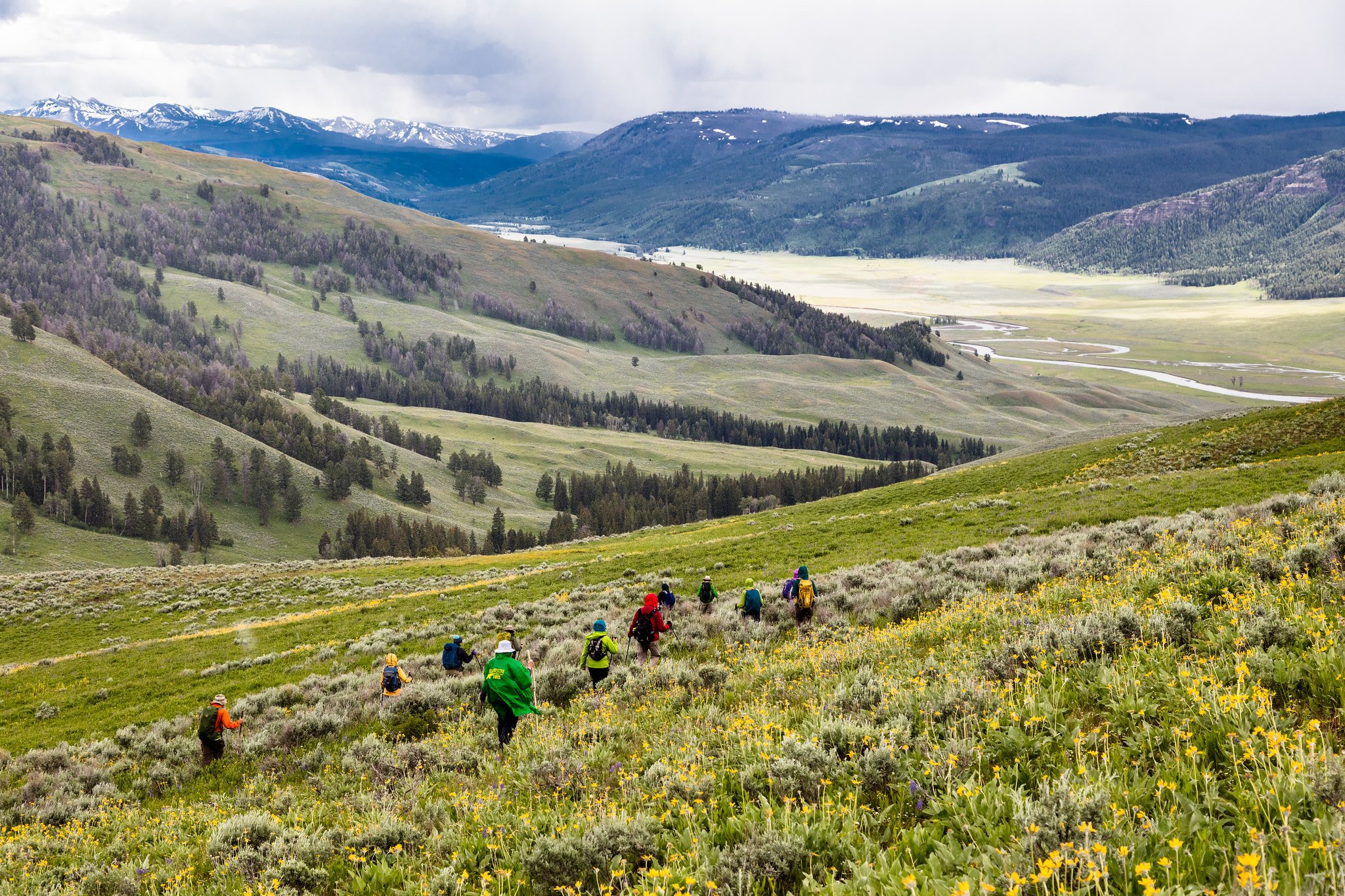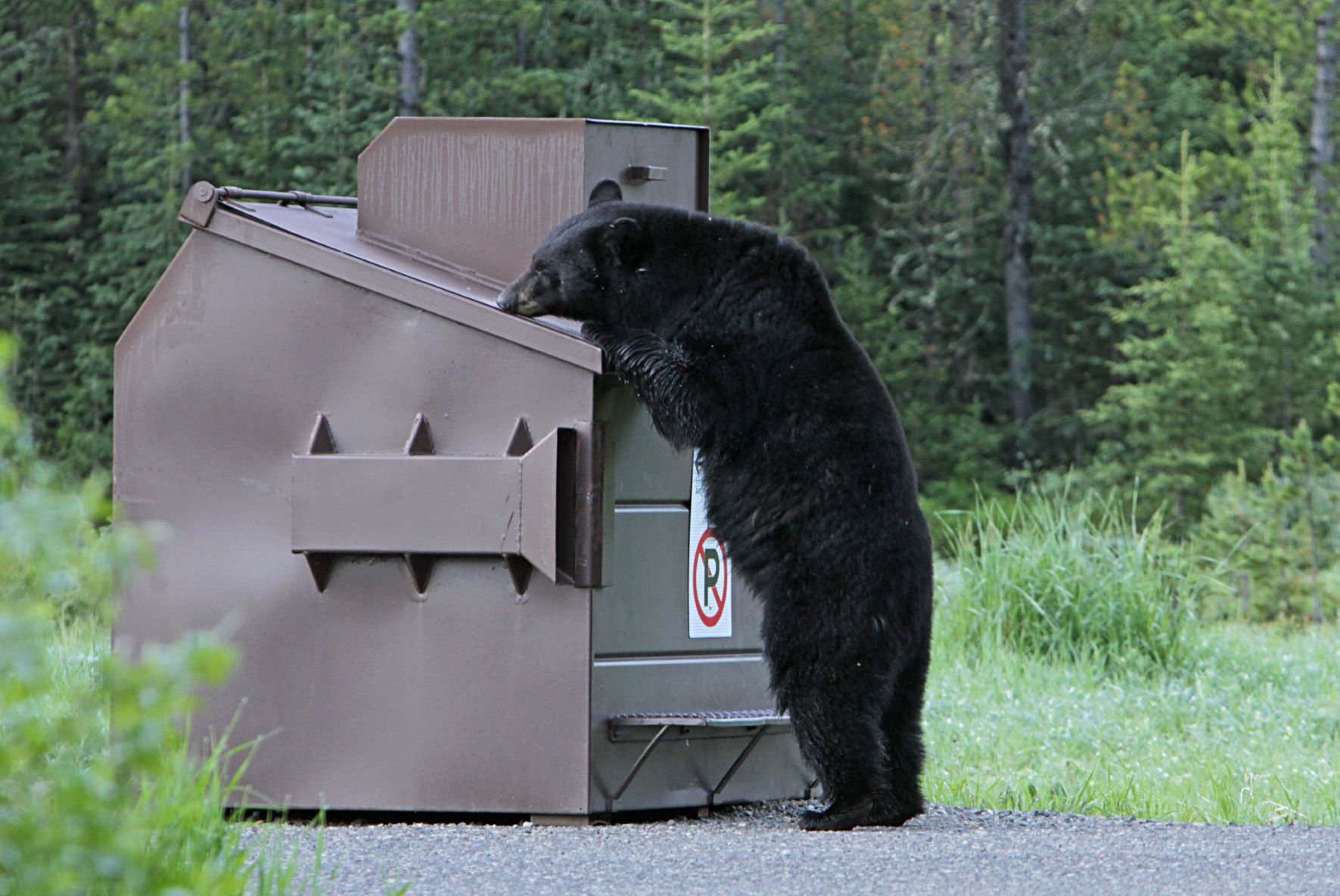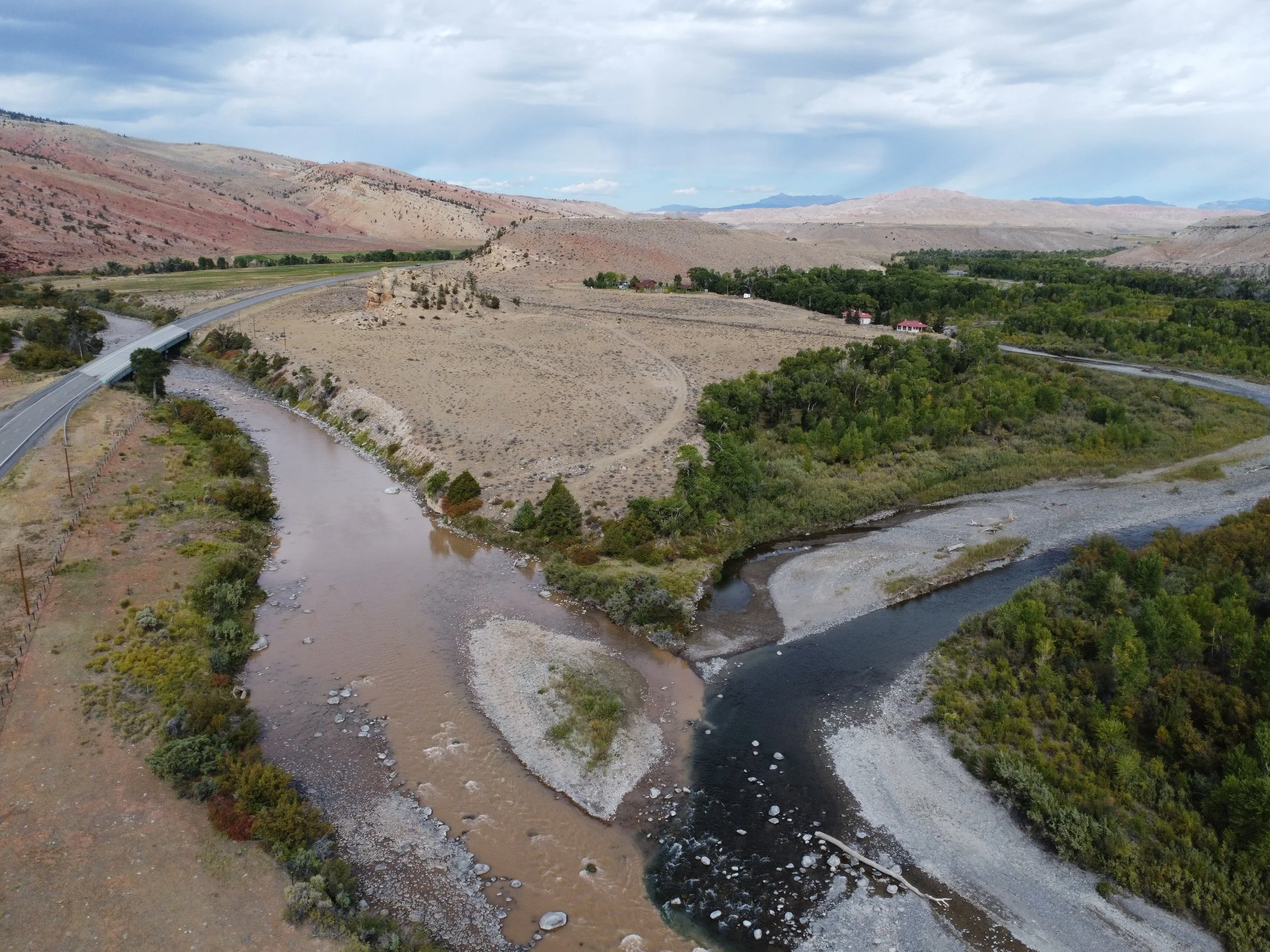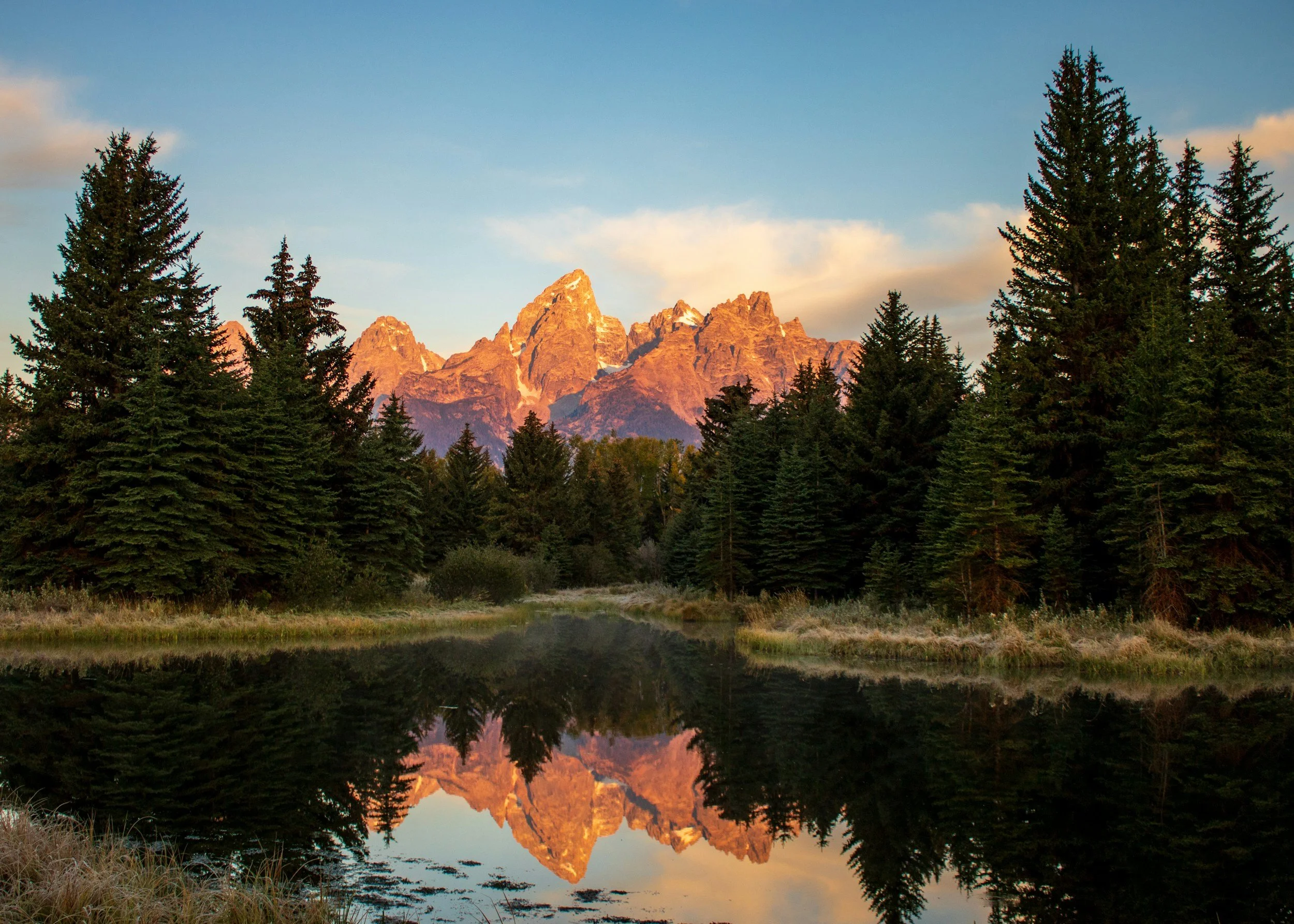
How to be a Respectful Explorer in Greater Yellowstone
The Greater Yellowstone Ecosystem is a special place, and it is up to everyone spending time here to keep it that way
Whether you are a resident or visitor to the Greater Yellowstone Ecosystem, there are best practices we can all follow when exploring the landscape to care for the lands, waters, wildlife, and each other. Read on to learn how you can be a good human of the Greater Yellowstone Ecosystem.
Use Bear-Resistant Storage Containers
The Greater Yellowstone Ecosystem is bear country. If you are planning an overnight trip, whether it is in the front country or backcountry, a tent, camper, or car, it is essential to properly store your food. Improper food storage can lead to negative altercations with bears, and potential harm to you or a bear.
Before you head out on an adventure, do your research on the type of bear-resistant storage containers required for the area you are headed. Some areas require bear cans, others permit bear hangs, some require you to use metal bear-proof lockers secured to the ground. For your own safety, and the safety of bears, follow food storage requirements during your time in the Greater Yellowstone Ecosystem.
Remember, “A fed bear is a dead bear.”
Follow Fishing and Hunting Regulations
For some, fishing and hunting in the Greater Yellowstone Ecosystem is a weekend tradition. For others, it can be the trip of a lifetime. Whether you are a resident or a visitor, it is important to research and follow fishing and hunting regulations. Valid fishing and hunting licenses are required to fish or hunt in any of the individual states that make up the Greater Yellowstone Ecosystem.
During the summer months, make sure to research and observe ‘hoot owl’ fishing closures put in place on rivers when flows are low, temperatures are high, and fish are susceptible to fatal stressors. Also, recognize that hunting takes place during specified seasons. Fishing and hunting information will be different for Montana, Wyoming, and Idaho – make sure to do your own research or contact a local outfitter or guide before you head out.
Obtain Tribal Recreation Permits
The lands of the Apsáalooke/Crow, Cheyenne, Eastern Shoshone, Northern Arapaho, Bannock, and Shoshone Tribes lie within the Greater Yellowstone Ecosystem. Tribes are sovereign nations, so if you want to visit or recreate on Tribal lands, you will need to acquire a permit to do so, even if you already have a hunting, fishing, or camping license for the state lands around the reservation.
Each reservation has its own rules and regulations. The Wind River Indian Reservation, for example, requires you to have a fishing/trespass permit with a recreation stamp to hike, fish, climb, or participate in any other type of recreation within the reservation. Since each reservation is different, make sure to do your research and be fully in the know before exploring Tribal lands.
Stay on Designated Trails
Recreating on trails in the Greater Yellowstone Ecosystem can bring you to and through some of the most spectacular peaks, waterfalls, and meadows.
Staying on designated trails prevents erosion, damage to vegetation, and the proliferation of unnecessary routes through a landscape. Keeping human traffic through an area concentrated along designated trails also provides wildlife with more undisturbed, unfragmented habitat.
Pack It In, Pack It Out
The phrase “pack it in, pack it out,” is a mantra you might have heard when talking about responsible recreation in the great outdoors. Whatever you bring onto the landscape, you are responsible for bringing out – your granola bar wrapper, the banana peel from lunch, even your used toilet paper needs to be removed from the landscape and disposed of properly.
Remember, just because something is biodegradable doesn’t mean it’s not trash. Those orange peels and apple cores are not naturally occurring in the ecosystem, so they need to come out with you too. Try keeping a designated trash bag in your backpack when you are out on an adventure so you have a place to stash your trash as well as any litter you find along the trail.
Follow Fire Regulations
The Greater Yellowstone Ecosystem is a fire-adapted ecosystem and fire has played a significant role in shaping the landscape. Fire is an important natural phenomenon, but human-caused wildfires pose significant risks to the landscape and the people who reside there.
Depending on the time of year, drought conditions, weather, and a combination of other factors, there will be different fire regulations in place on different landscapes across the GYE. Before you build a campfire or use a stove, do your research on fire regulations in the area.
Choose the Right Campsite
If you are spending the night under the stars in the Greater Yellowstone Ecosystem, it is important to protect nature by choosing the right campsite.
In the backcountry, that means finding a durable surface like rock, dirt, or dry grass that is at least 200 feet from a trail or any water source. If you are camping in the front country, make sure to use designated camp sites and stay within the boundaries of that site.
Take a long walk before going #2
Going #2 in the backcountry does not have to be a big deal, but following a few key rules is essential when dropping trou. Be sure to find a spot at least 200 feet away from any campsite, water, or trail. Have a digging tool handy – a garden trowel or trekking pole will do – and dig yourself a ‘cat hole’ six to eight inches deep. Do your business, then cover it up. Back to the practice of “packing it out,” make sure you pack any toilet paper out. Do yourself a favor and bring a double-bagged kit to store used toilet paper until you can find a proper place to dispose of it.
Going #2 in the wrong spot or without proper preparation of a cat hole can lead to water contamination or a bad day for other hikers trying to enjoy the beauty of the Greater Yellowstone Ecosystem.
Respect the Greater Yellowstone Ecosystem’s Wild Residents
Wildlife is just that, wild. Spending time in the Greater Yellowstone Ecosystem, you are bound to run into wildlife – from pika to bears–that require space and respect. The best thing you can do for wildlife is observe from a distance, give them space, never feed them, and properly store your food.
Be Considerate of Other Visitors
People travel from across the country and around the world to experience the wonders of the Greater Yellowstone Ecosystem. Whether you are local or visiting, consider how you can make everyone’s experience in the ecosystem a positive one.
Keep group sizes small, avoid playing music out loud, do not bring pets where they aren’t allowed, and know where it is appropriate and legal to use technology like drones.












